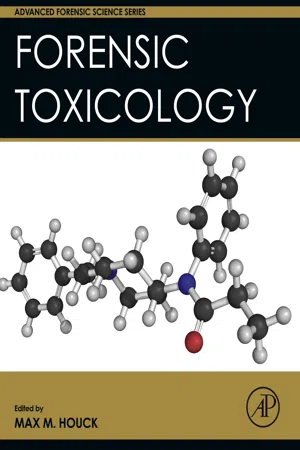Glossary
Abduction Syllogism in which one premise is certain whereas the other one is only probable, generally presented as the best explanation to the former. Hence, abduction is a type of reasoning in which we know the law and the effect, and we attempt to infer the cause.
Deduction Process of reasoning, which moves from the general to the specific, and in which a conclusion follows necessarily from the stated premises. Hence, deduction is a type of reasoning in which, knowing the cause and the law, we infer the effect.
Forensic intelligence Understanding on how traces can be collected from the scene, processed, and interpreted within a holistic intelligence-led policing strategy.
Heuristic Process of reasoning by rules that are only loosely defined, generally by trial and error.
Holistic Emphasizing the importance of the whole and the interdependence of its parts.
Induction Process of deriving general principles from particular facts or instances, i.e., of reasoning that moves from the specific to the general. Hence, induction is a type of reasoning in which, knowing the cause and the effect (or a series of causes and effects), we attempt to infer the law by which the effects follow the cause.
Linkage blindness Organizational or investigative failure to recognize a common pattern shared on different cases.
Science The intellectual and practical activity encompassing the systematic study of the structure and behavior of the physical and natural world through observation and experiment. It is also defined as a systematically organized body of knowledge on a particular subject.
Given that it identifies and collects objects at crime scenes and then treats them as evidence, forensic science could appear at first glance to be only a pragmatic set of various disciplines, with practitioners adapting and developing tools and technologies to help the triers of fact (juries or judges) interpret information gained from the people, places, and things involved in a crime. The view could be—and has been—held that forensic science has no philosophic or fundamental unity and is merely the application of knowledge generated by other sciences. Indeed, many working forensic scientists regard themselves mainly as chemists, biologists, scientists, or technicians, and rarely as practitioners of a homogeneous body of knowledge with common fundamental principles.
Even the 2009 National Academy of Sciences National Research Council Report failed to recognize such a concept, certainly blurred by a semantic gap in the terminology itself of field practitioners, who confuse words such as “forensic science(s),” “criminalistic(s),” “criminology,” “technical police,” “scientific police,” and so on, and generally restrict the scientific debate on analytical techniques and methods. An independent definition of forensic science, apart from its legal aspects, would support its scientific status and return the expert to his or her domain as scientist and interpreter of his analyses and results to assist the lay person.
What Is Forensic Science?
In its broadest sense, forensic science describes the utility of the sciences as they pertain to legal matters, to include many disciplines, such as chemistry, biology, pathology, anthropology, toxicology, and engineering, among others. (“Forensic” comes from the Latin root forum, the central place of the city where disputes and debates were made public to be solved, hence, defining the law of the city. Forensic generally means of or applied to the law.) The word “criminalistics” was adopted to describe the discipline directed toward the “recognition, identification, individualization, and evaluation of physical evidence by application of the natural sciences to law-science matters.” (“Kriminalistik” was coined in the late nineteenth century by Hans Gross, a researcher in criminal law and procedure to define his methodology of classifying investigative, tactical, and evidential information to be learned by magistrates at law schools to solve crimes and help convict criminals.) In the scheme as it currently stands, criminalistics is part of forensic science; the word is a regionalism and is not universally applied as defined. Difficulties in differentiating the concepts certainly invited the definition of criminalistics as the “science of individualization,” isolating this specific epistemologically problematic core from the other scientific disciplines. Individualization, the concept of determining the sole source of an item, enthroned a linear process—identification or classification onto individualization—losing sight of the holistic, variable contribution of all types of evidence. Assessing the circumstances surrounding a crime, where the challenge is to integrate and organize the data in order to reconstruct a case or propose alternative propositions for events under examination, requires multiple types of evidence, some of which may be quite nuanced in their interpretation. This is also true in the use of so-called forensic intelligence, which feeds investigative, police, or security needs, where one of the main reasons for failures is linkage blindness. Nevertheless, it seems that the essence of the forensic daily practice is hardly captured within the present definitions of both terms.
Forensic science reconstructs—in the broadest sense—past criminal events through the analysis of the physical remnants of those activities (evidence); the results of those analyses and their expert interpretation establish relationships between people, places, and objects relevant to those events. It produces these results and interpretations through logical inferences, induction, abduction, and deduction, all of which frame the hypothetico-deductive method; investigative heuristics also play a role. Translating scientific information into legal information is a particular domain of forensic science; other sciences must (or at least should) communicate their findings to the public, but forensic science is often required by law to communicate their findings to public courts. Indeed, as the Daubert Hearing stated, “[s]cientific conclusions are subject to perpetual revision as law must resolve disputes finally and quickly.” This doubly difficult requirement of communicating to the public and to the law necessitates that forensic scientists should be better communicators of their work and their results. Scientific inferences are not necessarily legal proofs, and the forensic scientist must recognize that legal decisions based, in part, on their scientific work may not accord with their expert knowledge. Moreover, scientists must think in probabilities to explain evidence given possible causes, while jurists mu...
